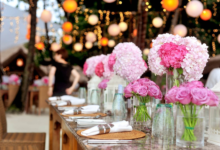Maximizing Small Gardens: Creative Landscaping Ideas for Limited Spaces

Limited space doesn’t have to mean limited creativity. Whether you have a tiny backyard, a small patio, or a cozy urban garden, there are plenty of ways to make the most of your available space. With thoughtful design and smart landscaping choices, you can transform even the smallest garden into a lush, functional, and visually appealing outdoor retreat. Here are some creative landscaping ideas for making the most of your small garden. For more information check out landscaping companies in dubai
1. Vertical Gardening
When you’re short on ground space, look up! Vertical gardening is a brilliant solution for maximizing small spaces. You can use walls, fences, or trellises to grow climbing plants like ivy, jasmine, or clematis, adding greenery without taking up valuable floor space. Another option is to install vertical planters, which allow you to grow herbs, flowers, or succulents in stacked or hanging containers. Vertical gardening not only saves space but also adds visual height and interest to your garden.
Pro Tip: Incorporate a living wall or vertical garden system to create a lush, green backdrop for your space. These can be built using modular planter kits or DIY with upcycled materials.
2. Multi-Functional Furniture
In small gardens, every piece of furniture should serve more than one purpose. Opt for multi-functional outdoor furniture, such as benches with built-in storage, foldable tables, or chairs that can be easily moved or stacked when not in use. This approach allows you to make the most of your space without sacrificing comfort or style.
Pro Tip: Use built-in seating or raised garden beds with seating edges to maximize space and create a seamless, integrated look.
3. Use Containers and Raised Beds
Container gardening is ideal for small spaces, as it allows you to grow a variety of plants in a compact area. Choose different-sized pots and containers to add height, dimension, and texture to your garden. Raised garden beds are also a great way to create designated planting areas, especially in small or awkwardly shaped spaces. They provide excellent drainage and can be filled with nutrient-rich soil, making them perfect for growing vegetables, herbs, or flowers.
Pro Tip: Use pots in contrasting colors or materials to create a dynamic and eye-catching design.
4. Incorporate Mirrors and Reflective Surfaces
Mirrors and reflective surfaces can work wonders in small gardens by creating the illusion of more space. A well-placed mirror on a garden wall or fence can make your garden feel larger and brighter, reflecting both light and greenery. You can also use reflective materials, like metal planters or shiny outdoor décor, to bounce light around the garden and add a modern, chic vibe.
Pro Tip: Position mirrors to reflect greenery or focal points like water features or sculptures for an added sense of depth.
5. Create Zones
Dividing a small garden into distinct zones can make it feel more spacious and organized. For example, you can create a seating area, a small dining space, and a planting zone, each with its own purpose. Using different materials, such as gravel for the dining area and wood decking for the seating zone, helps visually define each section while maintaining a cohesive overall design.
Pro Tip: Low hedges, planters, or even rugs can be used to subtly mark the boundaries between different areas.
6. Opt for Small Trees and Compact Shrubs
When selecting plants for a small garden, choose trees and shrubs that are compact or slow-growing. Small trees like Japanese maples or dwarf fruit trees add vertical interest without overwhelming the space. Similarly, compact shrubs, such as boxwood or lavender, can be used to create structure and definition in your garden without taking up too much room.
Pro Tip: Use pruning to keep plants neat and compact, ensuring they don’t outgrow the space.
7. Maximize Corners and Awkward Spaces
Don’t let any part of your garden go to waste—maximize every corner and awkward space. Use corner planters or L-shaped seating to make the most of underutilized areas. Awkward spaces, like narrow strips along fences or walls, can be transformed into green walkways or used for vertical gardening.
Pro Tip: In tight spaces, use trailing plants like creeping thyme or vinca to soften the edges and add greenery to hard-to-reach spots.
8. Add a Focal Point
Even in small gardens, having a focal point can anchor the space and give it a sense of purpose. Whether it’s a small water feature, a unique sculpture, or a colorful planter, a focal point draws the eye and adds a point of interest. Keep it simple but impactful—a well-chosen feature can transform the overall look and feel of your garden.
Pro Tip: Position the focal point where it can be seen from both inside and outside your home, creating a seamless indoor-outdoor connection.
9. Opt for Light, Neutral Colors
When designing a small garden, the color palette can make a big difference. Light, neutral colors make a space feel larger and more open. Consider using pale-colored paving, decking, or outdoor furniture to keep the space feeling airy and bright. You can then add pops of color through flowers, cushions, or planters to bring warmth and personality to the garden.
Pro Tip: Use a consistent color palette for plant pots, furniture, and accessories to create a harmonious and uncluttered look.
10. Use Water Features Wisely
Water features can make even the smallest garden feel more tranquil and relaxing. A compact fountain or water bowl adds a calming element to your space without taking up much room. Wall-mounted or corner water features are ideal for small gardens, as they provide the soothing sound of flowing water while preserving valuable floor space.
Pro Tip: If space allows, consider installing a small reflective pond or a minimalist fountain for a Zen-inspired garden retreat.
11. Choose Low-Maintenance Plants
In a small garden, maintenance can quickly become overwhelming if you choose high-maintenance plants. Opt for hardy, low-maintenance plants like succulents, ornamental grasses, or ferns. These plants thrive with minimal care, allowing you to enjoy your garden without spending too much time on upkeep.
Pro Tip: Mulch garden beds to retain moisture and suppress weeds, reducing the need for frequent watering and weeding.
Final Thoughts
Maximizing a small garden requires creativity, but with the right design and plant choices, you can create a functional and beautiful outdoor space that feels much larger than it is. From vertical gardens to smart use of furniture and reflective surfaces, these strategies will help you make the most of every inch of your garden, turning it into a personal oasis, no matter how small.





